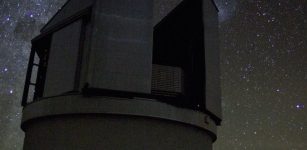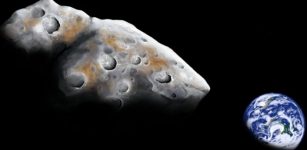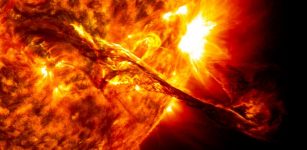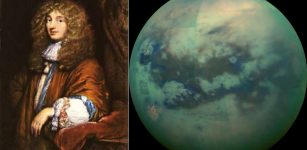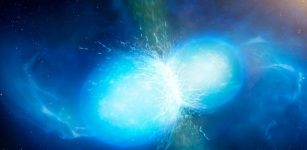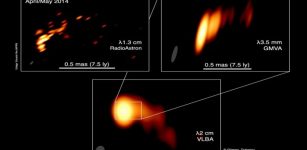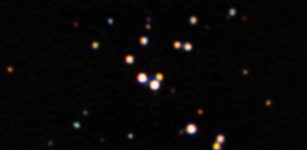A Galaxy Located In Hercules Constellation Has Lowest Oxygen Level – New Study
Eddie Gonzales Jr. – MessageToEagle.com – Using data from Subaru Telescope and the power of machine learning, astronomers have discovered a galaxy in the constellation Hercules with an extremely low oxygen abundance of 1.6% solar abundance.
This discovery breaks the previous record of the lowest oxygen level and suggests that most of the stars in this galaxy formed very recently.
 Image of HSC J1631+4426 discovered by the international team with the Subaru Telescope. HSC J1631+4426 broke the record for the lowest oxygen abundance. (Image Credit: NAOJ/Kojima et al.)
Image of HSC J1631+4426 discovered by the international team with the Subaru Telescope. HSC J1631+4426 broke the record for the lowest oxygen abundance. (Image Credit: NAOJ/Kojima et al.)
Most of the galaxies in the modern Universe are mature galaxies, but standard cosmology predicts that there may still be a few galaxies in the early formation stage in the modern Universe.
Because these early-stage galaxies are rare, an international research team searched for them in wide-field imaging data taken with the Subaru Telescope.
“To find the very faint, rare galaxies, deep, wide-field data taken with the Subaru Telescope was indispensable,” Dr. Takashi Kojima, the leader of the team, said.
However, it was difficult to find galaxies in the early stage of galaxy formation from the data that includes as many as 40 million objects. So the research team developed a new machine learning method to find such galaxies from the vast amount of data.
Follow-up observations to determine the elemental abundance ratios of 4 of the 27 candidates selected by the computer helped to find one galaxy (HSC J1631+4426), located 430 million light-years away in the constellation Hercules, has an oxygen abundance only 1.6 percent of that of the Sun.
This is the lowest values ever reported for a galaxy. The measured oxygen abundance suggests that most of the stars in this galaxy formed very recently. In other words, this galaxy is undergoing an early stage of galaxy evolution.
“What is surprising is that the stellar mass of the HSC J1631+4426 galaxy is very small, 0.8 million solar masses. This stellar mass is only about 1/100,000 of our Milky Way galaxy, and comparable to the mass of a star cluster in our Milky Way,” said Prof. Ouchi of the National Astronomical Observatory of Japan and the University of Tokyo. This small mass also supports the primordial nature of the HSC J1631+4426 galaxy.
There are two interesting indications from this discovery. First, this is the evidence about a galaxy at such an early stage of galaxy evolution existing today. In the framework of the standard cosmology, new galaxies are thought to be born in the present universe. The discovery of the HSC J1631+4426 galaxy backs up the picture of the standard cosmology.
Second, we may witness a new-born galaxy at the latest epoch of cosmic history.
The standard cosmology suggests that the matter density of the universe rapidly drops in our universe whose expansion accelerates. In the future universe with the rapid expansion, matter does not assemble by gravity, and new galaxies won’t be born. The HSC J1631+4426 galaxy may be the last generation galaxy in the long cosmic history.
Written by Eddie Gonzales Jr. – MessageToEagle.com Staff

